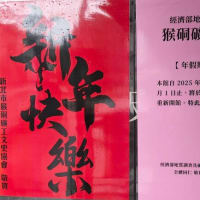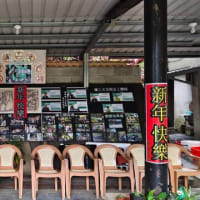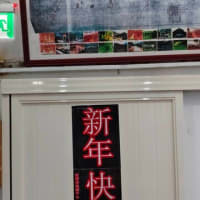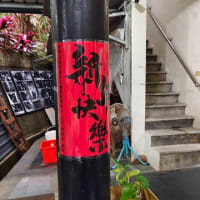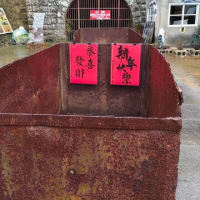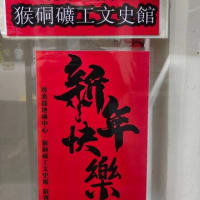Hi, there!
This photo shows a steel building of gigantic proportions in the Meiji era (1868-1912),
the “Shaft Head Frame” which soars into the air in the Tagawa City Coal Mining Memorial Park (Sekitan Kinen Koen)
where our museum is located.
It is popular as a symbol of Tagawa City and a building which typifies the good old days of the Chikuho Coalfield.
Now, what in the world do you think the shaft head frame is?
“Shaft” stands for “mineshaft” which means “a deep narrow hole that goes down to a mine (OALD).
“Head frame” is a structure which is built on the mouth of a vertical mineshaft. Through a vertical shaft, coal is wound up and workers were raised and lowered in a lift (elevator) also called a cage.
It is a shaft head frame that is built to hang and support the cage.
This remaining shaft head frame was completed in 1909 as the head frame for the Ita No.1 vertical shaft of the Mitsui Tagawa Mining Station (Ita Pit). It is an English-style head frame with backstays and 28.4 meters tall at the maximum. A winding machine pertaining to it was installed in a separate station. It has a pair of backstays on the west side, because the winding machine station was located on the same side to wind up and down a cage supported with wire ropes.
It developed that Mitsui ordered the steel to build this head frame from Alexander Findley & Co Ltd. in Britain.
We can find everywhere on the head frame punch marks to probably show the names of steelmakers as the subcontractors, such as "GLENGARNOCK STEEL," "LANARKSHIRE STEEL Co. Ld.," and "GLASGOW STEEL."
In Japan, the “Imperial Steel Works” with a “blast furnace” of German make came online in Yahata (Yawata) in 1901,aiming to use coal from Chikuho. It would have been natural for Mitsui if they had used domestic steel.
However, it seems that it was advantageous for them, also from the perspective of the term of construction, to import steel for the head frame from a developed country like Britain, because the newly built Steel Works could not supply enough steel to domestic users at first.
There was a vertical shaft approx. 5.5 meters in diameter and approx. 314 meters in operational depth beneath the head frame, and tunnels stretched to coalfaces from the depth.
When the shaft head frame was in operation, a two-storied steel cage went up and down the shaft without break to carry out coal.
By the completion of this shaft and the 2nd one which made the Ita Pit famous as one of the greatest pits with shafts in Japan, western-style mining facilities came into existence also in Tagawa, one of the centers of Chikuho which was the largest coal field areas in this country at that time.
日本語訳はコチラから













